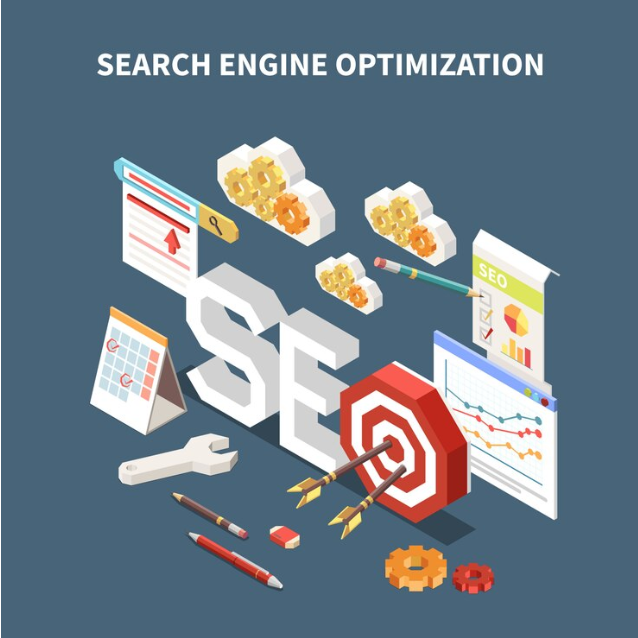In the world of digital marketing, content is king, but that doesn’t mean you need to keep writing more and more to improve your rankings. Many businesses believe that the only way to boost their SEO is by constantly creating fresh content. However, there are alternative strategies that can help you dominate search results without adding more content. By optimizing your existing assets, leveraging technical SEO, improving user experience, and using high-quality SEO services, you can achieve higher rankings and attract more traffic without increasing your content output.
Optimize Existing Content
Instead of producing new content, improving what you already have can yield significant SEO gains. Here’s how:
a. Update and Refresh Older Content
Google favors fresh and relevant content. If your existing pages contain outdated information, they might not perform as well. Here’s what you can do:
- Update outdated statistics, facts, and links.
- Add new insights, images, and videos.
- Expand sections to cover emerging trends and industry changes.
- Improve readability by breaking up long paragraphs and adding bullet points.
b. Optimize for Keywords
Revisiting your keyword strategy can help improve rankings without new content. Identify low-performing pages and:
- Add relevant keywords naturally.
- Improve keyword placement in headings, meta descriptions, and URLs.
- Optimize for long-tail keywords to attract more targeted traffic.
c. Improve Internal Linking
A well-structured internal linking strategy helps search engines understand your website’s hierarchy and boosts page authority. Ensure that:
- Important pages have enough internal links.
- Anchor texts are keyword-rich and relevant.
- Pages with high authority link to lower-performing pages.
Leverage Technical SEO
Technical SEO plays a crucial role in improving search rankings without writing additional content. A well-optimized website ensures a better user experience and higher search visibility.
a. Improve Website Speed
Google considers page speed a ranking factor. A slow website can negatively impact your rankings and user experience. To speed up your site:
- Compress images without losing quality.
- Use a content delivery network (CDN).
- Minimize JavaScript and CSS files.
- Enable browser caching.
b. Fix Broken Links and Redirects
Broken links create a poor user experience and can harm SEO rankings. Regularly check for:
- Broken internal and external links.
- Redirect loops and errors.
- Pages returning 404 errors.
c. Optimize for Mobile
With Google’s mobile-first indexing, ensuring your website is mobile-friendly is essential. Improve mobile usability by:
- Using a responsive design.
- Improving touch elements (buttons and links).
- Ensuring text is readable without zooming.
Enhance User Experience (UX)
Google prioritizes user experience when ranking websites. Optimizing UX can help you win SEO without additional content.
a. Improve Website Navigation
A well-structured site makes it easier for users and search engines to find relevant pages. Tips for better navigation include:
- Using clear menus and categories.
- Ensuring every page is accessible within a few clicks.
- Creating a logical site structure with a proper URL hierarchy.
b. Reduce Bounce Rate
If users leave your website quickly, it signals to Google that your content is not useful. Reduce bounce rate by:
- Improving page load times.
- Making content engaging with visuals and interactive elements.
- Providing clear calls to action (CTAs).
c. Improve Core Web Vitals
Google’s Core Web Vitals measure user experience through metrics like load time, interactivity, and visual stability. Use Google’s PageSpeed Insights tool to identify and fix issues affecting your Core Web Vitals.
Strengthen Your Backlink Profile
Backlinks remain one of the most important ranking factors. Earning high-quality backlinks can significantly boost your rankings without requiring new content.
a. Reclaim Lost Backlinks
Over time, websites may remove or change URLs, causing lost backlinks. You can:
- Use tools like Ahrefs or SEMrush to find lost backlinks.
- Contact webmasters to restore them.
- Redirect broken pages to relevant content.
b. Earn Natural Backlinks
Building backlinks naturally can improve your domain authority. Strategies include:
- Guest posting on high-authority sites.
- Creating infographics that others can embed.
- Collaborating with influencers in your niche.
c. Disavow Toxic Links
Low-quality backlinks can harm your SEO. Regularly audit your backlink profile and disavow spammy or harmful links using Google’s Disavow Tool.
Optimize for Local SEO
If you target local customers, optimizing for local SEO can significantly improve your rankings without adding new content.
a. Optimize Google My Business (GMB)
Your GMB listing helps you rank in local searches. Ensure your profile is complete with:
- Correct business name, address, and phone number (NAP consistency).
- High-quality images and business updates.
- Positive customer reviews.
b. Get Local Citations
Local citations from directories like Yelp, Yellow Pages, and industry-specific sites boost credibility. Ensure your NAP details are consistent across all listings.
c. Encourage Customer Reviews
Positive reviews improve trust and influence rankings. Encourage satisfied customers to leave reviews on Google and other review platforms.
Utilize SEO Packages and SEO Services
If you lack the expertise or time to implement these strategies, investing in professional SEO services can help. High-quality SEO packages include:
- Technical SEO audits and fixes.
- On-page and off-page optimization.
- Competitor analysis and keyword research.
- Link-building and local SEO optimization.
By choosing reliable SEO packages, businesses can enhance their rankings without creating more content. A well-rounded SEO strategy ensures long-term growth and higher visibility on search engines.
Conclusion
Winning at SEO doesn’t always mean writing more content. By optimizing existing content, leveraging technical SEO, enhancing user experience, building quality backlinks, focusing on local SEO, and investing in SEO services, you can improve your rankings and drive more traffic effectively. Implement these strategies, and you’ll see significant SEO gains without the need for constant content creation. Whether you choose to handle it yourself or invest in SEO packages, these steps will set your website up for long-term success.

